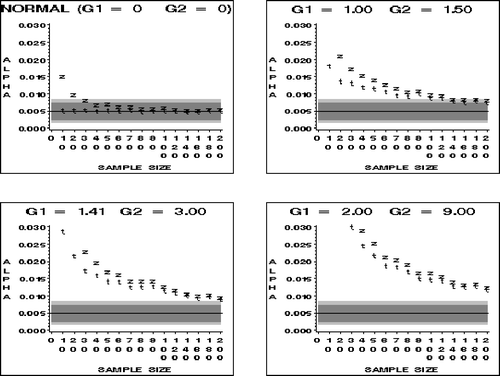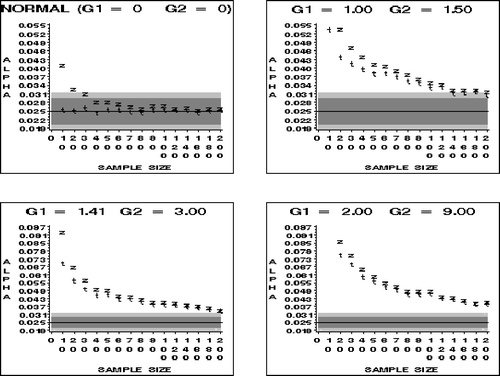Figures & data
Table 1: Robustness and Confidence Bounds for the Various Nominal Levels of Alpha
Figure 1. Comparison of Observed Alphas for t and z at the .01 Nominal Level for Samples from the Normal and Low Kurtosis Distributions. The dark gray area indicates the robustness bounds; the light gray area shows the confidence bounds for the simulation.
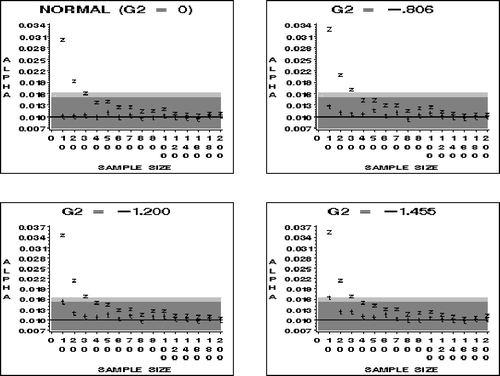
Figure 2. Comparison of Observed Alphas for t and z at the .05 Nominal Level for Samples from the Normal and Low Kurtosis Distributions. The dark gray area indicates the robustness bounds; the light gray area shows the confidence bounds for the simulation.
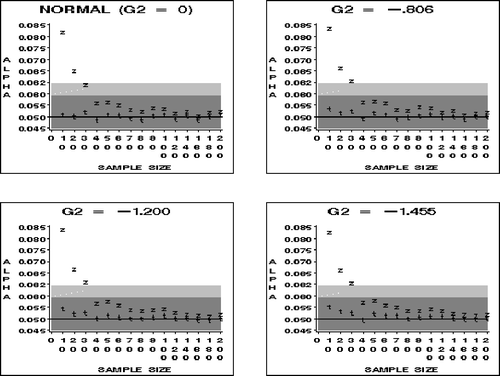
Figure 3. Comparison of Observed Alphas for t and z at the .01 Nominal Level for Samples from the Normal and High Kurtosis Distributions. The dark gray area indicates the robustness bounds; the light gray area shows the confidence bounds for the simulation.
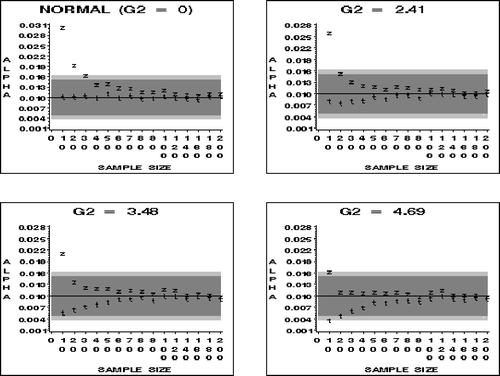
Figure 4. Comparison of Observed Alphas for t and z at the .05 Nominal Level for Samples from the Normal and High Kurtosis Distributions. The dark gray area indicates the robustness bounds; the light gray area shows the confidence bounds for the simulation.

Table 2: Power of t and z For the Normal and Contaminated Normal (G2 = 4.69) Parents For Mean Shifts of .5 Sigma and 1 Sigma For One-Tail Nominal Levels of .01 and .05
Figure 5. Comparison of Observed Alphas for t and z at the .01 Nominal Level for Samples from the Normal and Skewed Distributions. The dark gray area indicates the robustness bounds; the light gray area shows the confidence bounds for the simulation.
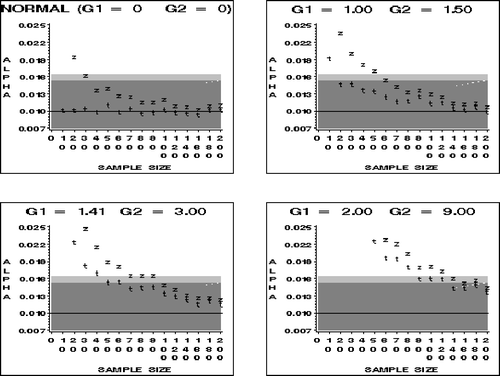
Figure 6. Comparison of Observed Alphas for t and z at the .05 Nominal Level for Samples from the Normal and Skewed Distributions. The dark gray area indicates the robustness bounds; the light gray area shows the confidence bounds for the simulation.

Figure 7. Comparison of Observed Upper-Tailed Alphas for t and z at the .005 Nominal Level for Samples from the Normal and Skewed Distributions. The dark gray area indicates the robustness bounds; the light gray area shows the confidence bounds for the simulation.
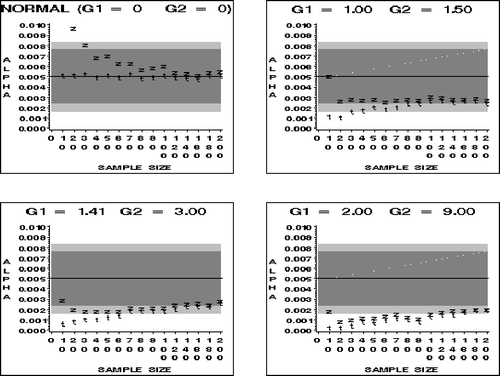
Figure 8. Comparison of Observed Upper-Tailed Alphas for t and z at the .025 Nominal Level for Samples from the Normal and Skewed Distributions. The dark gray area indicates the robustness bounds; the light gray area shows the confidence bounds for the simulation.
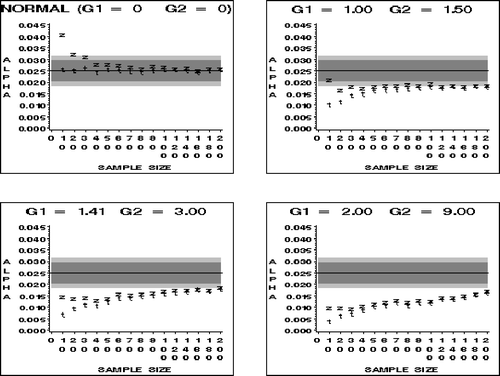
Table 3: Power of t and z For the Normal and Chi-Square Parent Distributions For Mean Shifts of .5 Sigma and 1 Sigma For One-Tail Nominal Levels of .005 and .025
